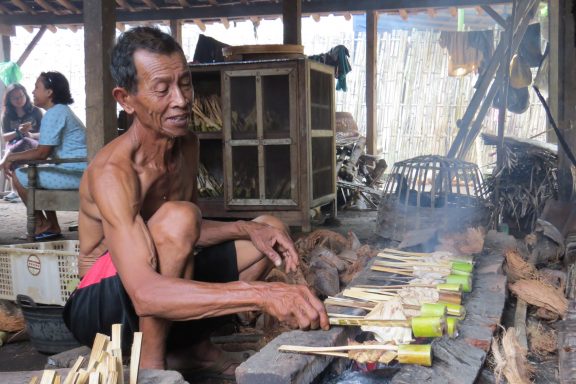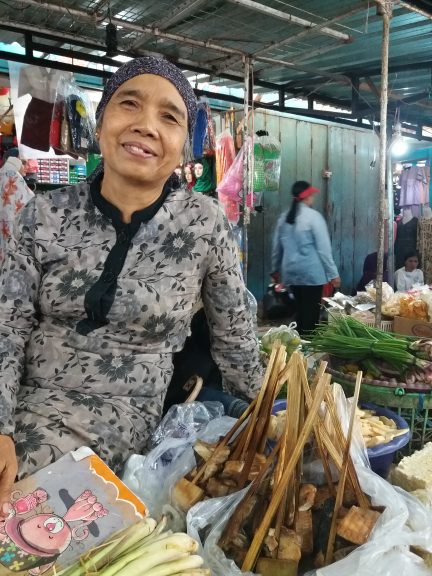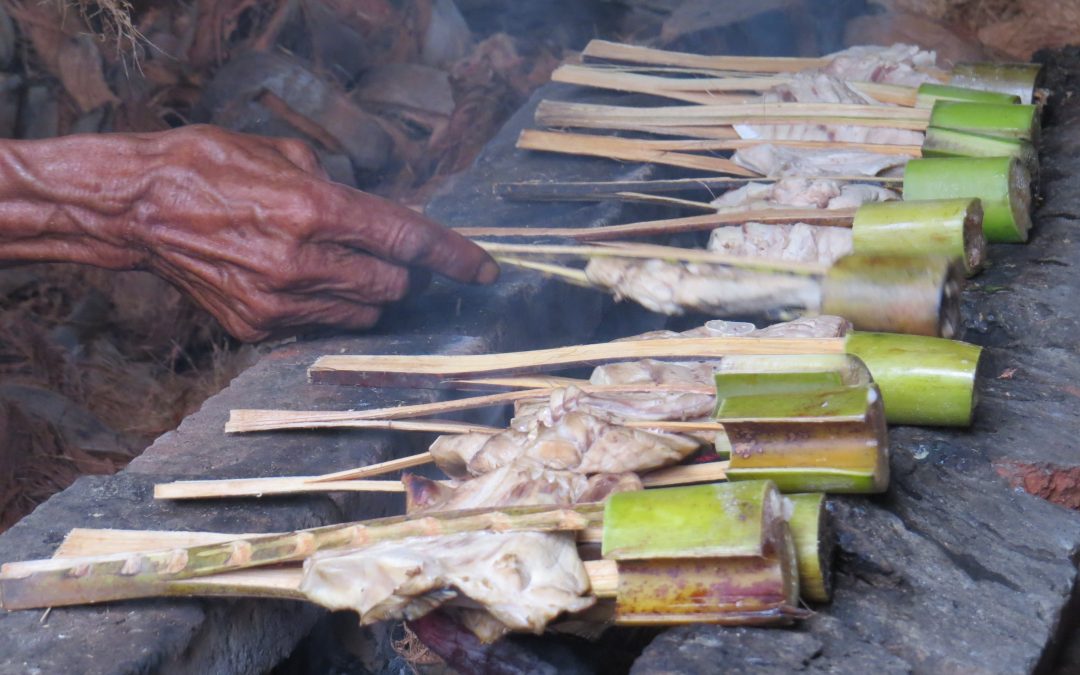Mobula rays are commonly consumed by the people of East Java as a product known as sate iwak pe. The reasons why are surprising, and create a potential barrier for the adoption of sustainable fishery practices.
Many species of ray are landed by the fisheries of Muncar. Some species are targeted by fishers, including spotted whipray, whiptail stingray, butterfly ray, flapnose ray, leopard whipray and blue-spotted ray. Others, such as mobula rays, are a bycatch of the sardine purse-seine, marlin gillnet and other fisheries. Both target and non-target species are sold in the local market to cottage processors, who smoke the meat to create a local delicacy known as sate iwak pe.
Many processors prefer to create sate iwak pe from mobula ray meat, as it increases their profit.
Pak Sajum is one of those local processors, “I buy all kinds of rays to make sate iwak pe. Usually I buy pari plentik (spotted ray) as it is the most common. But I prefer to buy mobula rays because they are IDR 3,000 per kg cheaper.”

Pak Sajum smokes sate iwak pe over a charcoal fire
Processors like Pak Sajum sell their sate iwak pe in the local market, where people purchase it to use as the basis of a wide variety of local dishes including soups and curries. Once smoked, the meat has a similar texture, colour and taste, and it is very difficult to identify which species it is from.
“When the eat sate iwak pe, most people would not know which species of ray they are consuming. Only the processors can distinguish the flavour, usually pari plentik is more delicious than mobula,” said Pak Sajum.
In fact, in working closely with the local community of Muncar, we’ve found that most people have never heard of manta rays or mobula rays. They are unaware that some species are under threat. Most people do not distinguish between different species, but use iwak pe as a generic term to refer to all species of ray.

Ibu Sundani sells sate iwak pe in Muncar’s traditional market
“I don’t know how to identify the different species of ray. To me they are all iwak pe,” explained Ibu Sundani, a seller in the local market.
This issue creates a potential barrier to the adoption of sustainable practices within the fishery. Misidentification of species and poor traceability makes it difficult for consumers to make informed decisions about the fish that they buy. Perhaps more importantly, when fishers are aware that a market exists for their bycatch, they have few incentives to adopt strategies to reduce their bycatch.
Pak Kusnandar, a gillnet fisher, told us, “my main target is marlin and sailfish, but sometimes mobula rays do get tangled in my net. They cause damage which I have to repair. But if we don’t catch any marlin, we’re happy to with anything that we can sell in the market, including mobula rays.”
Within the small-scale drifting gillnet fishery, the main incentives to reduce interactions with mobula rays is the fact that they cause costly damage to nets, and occupy space of more valuable target species. But these costs are offset slightly by the fact that when mobula do become entangled in nets, they can be sold in the local market.
Our pilot study aims to investigate the feasibility of using light to reduce mobula ray bycatch in small-scale fisheries. While we have seen some positive indications that the technologies work, widespread adoption of these technologies will require the correct incentives to be established.
Markets have a role to play, and the processors, hotels and restaurants that buy the targetted marlin and swordfish must demand greater insight into the source of these products. Similarly, the government has an important role to play by creating and enforcing the regulations that will ensure mobula ray meat no longer has a competitive advantage in the marketplace.
While the bycatch reduction technologies we are piloting appear to be effective, for fishers to invest in these technologies they must perceive an advantage. The low market price of endangered, threatened and protected species such as mobula rays represents a significant barrier to investment in and adoption of sustainable practices by fisheries. This is an important issue that will require a collaborative approach to solve.


